1. Tama no Kihara mizubasho habitat
水芭蕉群生地オープン
Through early May
Shichikashuku, Miyagi

Mizubasho, called "white skunk cabbage" in English, is not as malodorous as its moniker would have it seem. Though belonging to the same genus as Western skunk cabbage species, which do have a reputation for foul odor, this Asian variety, which grows only in northern Japan and eastern Russia, has a more variable scent that is often very faint, or sometimes even sweet and pleasant. As such, in Japanese culture the flower is generally seen in a poetic sense, to the point that there is even a sake brewery named after it. This particular mizubasho colony is located in Shichikashuku, a charming rural town in southern Miyagi.
Hours: Always open
Admission: Free
Details: town.shichikashuku.miyagi.jp
Location: Tama no Kihara Mizubasho habitat (玉の木原水芭蕉群生地). Map here.
Access: About 90 minutes by bus from Shiroshi or Shiroishi-Zao Stations, followed by a 20-minute walk. At Shiroishi Station (白石駅) or Shiroishi-Zao Station (白石蔵王駅), board Shichikashuku-Shiroishi Line (七ヶ宿白石線) bus bound for Yakuba・Nananiro Hiroba (役場・なないろひろば). Alight at Yakuba, Family Mart Shichikashuku-ten, or Nanairo Hiroba (役場、ファミリーマート七ヶ宿店、なないろひろば) bus stop, then transfer to a Shichikashuku Kaido Line (七ヶ宿街道線) bus bound for Yubara・Hikaba (湯原・干蒲). Alight at Yubara Sakanoue (湯原坂の上). Bus timetables here (Shichikashuku Shiroishi Line) and here (Shichikashuku Kaido Line).
2. Kakuda Nanohana Flower Festival
かくだ菜の花まつり
Through May 5
Kakuda, Miyagi

Nanohana are another cheerful Japanese spring flower. This same plant is also eaten as a vegetable when young and, when mature, the seeds are pressed to make rapseed oil (for example, canola oil). In Kakuda, nanohana fields along the riverside offer idyllic views of the flowers and surrounding countryside.
Hours: Always open
Admission: Free
Details: miyagi-kankou.or.jp
Location: The nanohana fields near the Abukuma River Kakudabashi Brige. Map here.
Access: 2.6 km on foot or by rental cycle from Kakuda Station.
3. Kyu-Abe House Hinamatsuri
旧阿部家ひなまつり
Through May 5
Sakata, Yamagata

A Hinamatsuri celebration at the historical Abe House. Roughly six hundred antique hinamatsuri dolls, dating from the end of the Edo period to the pre-WWII era, are displayed. Visitors are also invited to make or paint their own hinamatsuri dolls here.
Hours: 9:00–16:30 (last entry 16:00)
Closed days: Mondays. If Monday is a holiday, the house will be open Monday and closed the following day.
Admission: Free
Details: yamagatakanko.com
Location: At the Kyu-Abe House (旧阿部家). Map here.
Access: 30 minutes by bus from Sagoshi Station. From Sagoshi Station Ekimae (砂越駅前) bus stop, board a Hirata Runrun Bus (平田るんるん) Sagoshi Kobayashi Line (砂越小林線) bus bound for Kobayashi (小林). Bus map and timetable here.
Access to Sakata from Sendai: About 3.5 hours by train or highway bus. The Sakata Shoko Bus Terminal (酒田庄交バスターミナル) is the highway bus hub in Sakata, and is located next to Sakata Station. Highway bus timetable here.
4. Miyagi Zao Eboshi Narcissus Festival
みやぎ蔵王えぼしすいせん祭り
Through May 6
Zao-machi, Miyagi
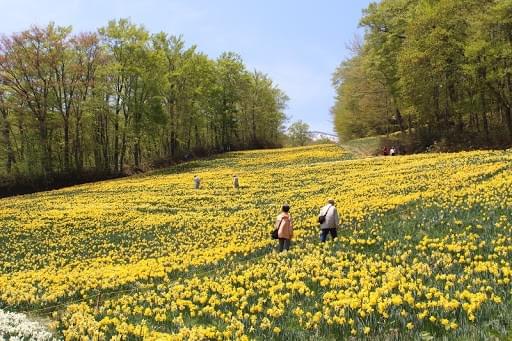
The snow at Eboshi Skijo is long gone, replaced by hillsides full of blooming flowers. Come see thirty types of narcissus—about 550,000 flowers in total! You can also ride the ropeway for a view of the flowers from above.
Hours: 9:00–16:00
Admission: ¥600 adults & high school students, children ages junior high & younger free
Eboshi Skijo details (English): visitmiyagi.com
Event details: eboshi.co.jp
Location: Miyagi Zao Eboshi Skijo (みやぎ蔵王えぼしスキー場). Map here.
5. Hanawa Azalea Festival
はなわのつつじ祭り
April 29–May 9
Hanawa, Fukushima
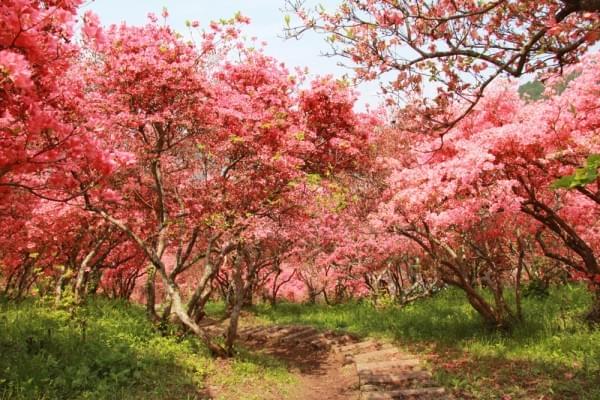
The Hanawa Azalea Festival takes place at Furoyama Koen, a hillside park where 4,000 tree-sized bushes of mountain azaleas grow. The azaleas were planted by a youth association in the aftermath of the Russo-Japanese War (1904–1905) as a symbol of hope for the town. Now, over a hundred years later, they still bloom as beautifully as ever, tinting the hillside a vivid magenta every spring. This year, the town is keeping the festival simple: The main attraction is, naturally, the azaleas, with social distancing–friendly events like hiking, cycling, and a photo contest as side activities.
Hours: Always open
Admission: ¥100 donation requested
Details: hanawa-kanko.com
Location: Furoyama Park (風呂山公園). Map here.
Access: 21-minute walk from Iwaki-Hanawa Station
6. Otsujigataki Falls Light Up
乙字ヶ滝ライトアップ
Through May 9
Sukagawa, Fukushima
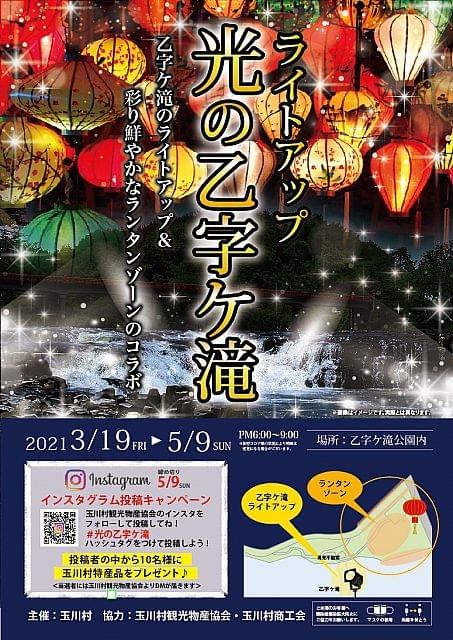
Otsujigataki is ranked on of Japan's Top 100 Waterfalls. Come see it in a new light (literally!) at this evening illumination. In addition to the waterfall being lit up, the park-like area near the falls will also be illuminated, with colorful Asian lanterns.
Hours: 18:00–21:00
Admission: Free?
Details: tif.ne.jp
Location: Otsujigataki Park (乙字ヶ滝公園). Map here.
Access from Sukagawa Station: About 25 minutes by bus. At Sukagawa Station (須賀川駅), board bus bound for Ishikawa Station (石川駅) via Tatsuzaki (竜崎). Alight at Takiyama (滝山). Timetables here.
Access from Ishikawa Station: About 30 minutes by bus. At Ishikawa Station (石川駅), board bus bound for Sukagawa Station (須賀川) via Tatsuzaki (竜崎). Alight at Takiyama (滝山). Timetables here.
7. Tamasudare Falls Light Up
玉簾の滝ライトアップ
Through May 9
Sakata, Yamagata
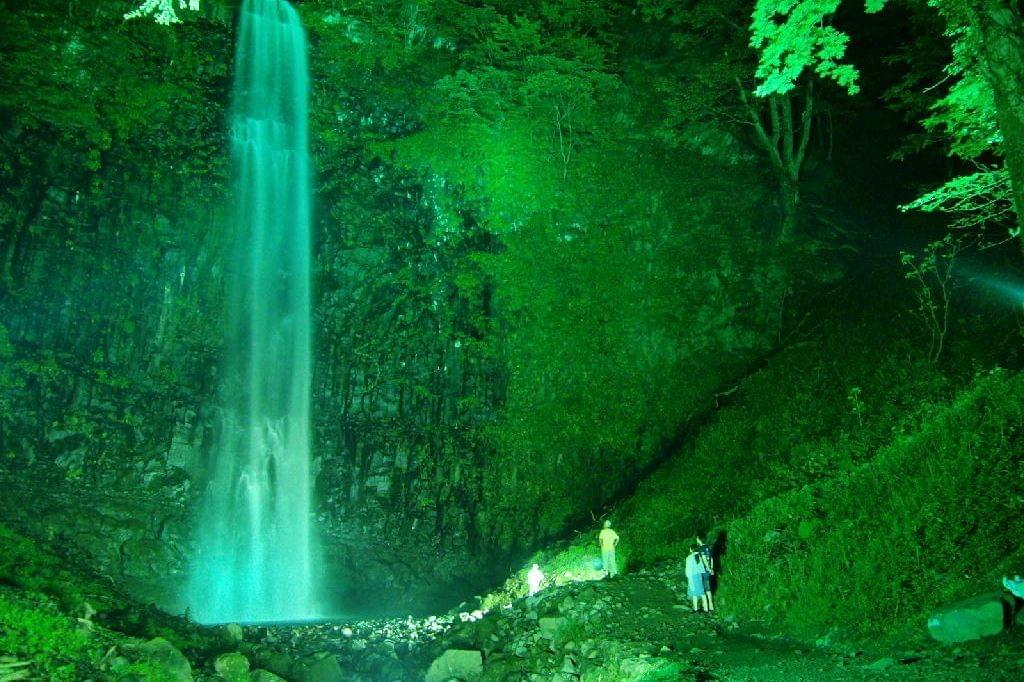
Yamagata is home to the greatest number of waterfalls of any prefecture in Japan, and of them the tallest is Tamasudare no Taki. That says something about its size, but what of its beauty? It's also ranked one of Japan's Top 100 Waterfalls, so is certainly a sight to behold. The waterfall can be viewed year-round during the daytime, but is only illuminated at night during special times of year, one of which is Golden Week.
Hours: Always open (light-up 18:30–21:00)
Admission: Free
Details: sakata-kanko.com
Location: Tamasudare Falls (玉簾の滝). Map here.
8. Hirata Shibazakura Festival
平田芝桜まつり
Through May 15
Hirata, Fukushima

One of the best places for shibazakura (pink phlox) viewing in Tohoku. the hillsides here are covered in various shades of the flower, from white to day-glo pink. The gardeners have put the color variation to good use, "growing" various designs, and even spelling out the name of the town in flowers. Though the festival is officially set to run through May 15, the flowers bloomed nearly two weeks earlier than usual this year, which means they're likely to wither earlier as well.
Hours: 8:30–17:00
Admission: ¥500 adults & high school students, children ages junior high & younger free
Details: vill.hirata.fukushima.jp
Location: Jupiland Hirata (ジュピアランドひらた). Map here.
9. Traditional Kokeshi of Tohoku
東北の伝統こけし
Through May 16
Central Sendai
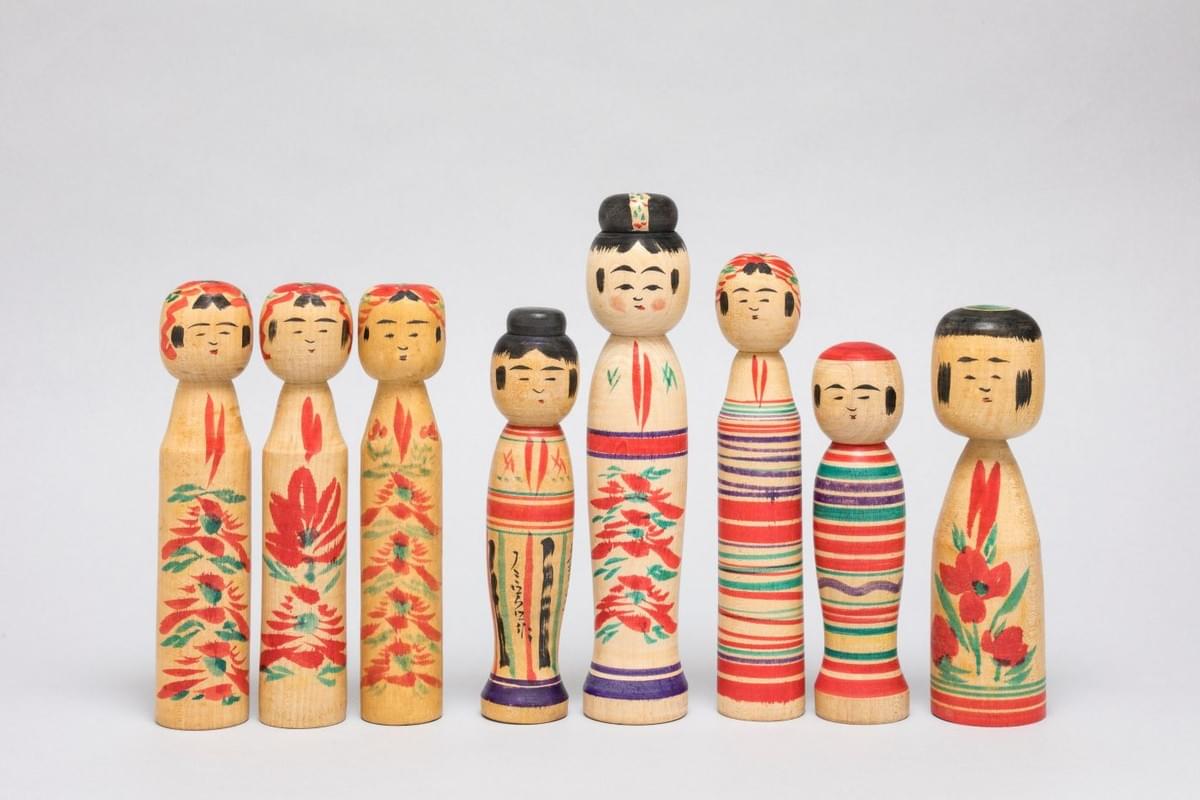
Kokeshi are traditional wooden dolls which originated in Tohoku; this exhibition pays homage to their origins by displaying kokeshi from across the region. In particular, the exhibition will showcase the work of Akira Kon, a Tsugaru kokeshi artisan.
Hours: 10:00–16:00 (last entry 15:30)
Closed days: Mondays (open if Monday is a national holiday)
Admission: ¥300 adults, seniors 65+ free, children ages high school & younger free
Details: kameimuseum.or.jp
Location: Museum of Kamei Collection (カメイ美術館). Map here.
Access: 4-minute walk from Itsutsubashi Station, or 7-minute walk from Sendai Station
10. Sunmall Used Book Market
サンモール古本市 in 金港堂
Through May 23
Central Sendai
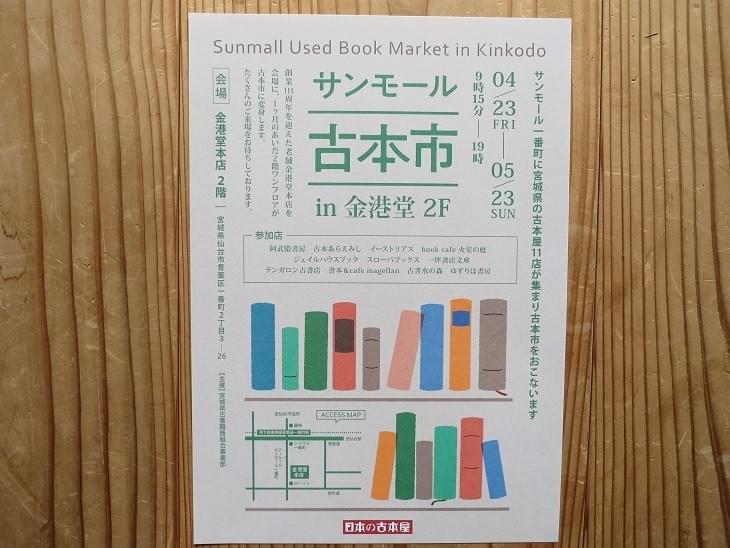
Kinkodo is a 111-year-old bookshop located in the Sun Mall shopping arcade of downtown Sendai. In the event space on the second floor of their building, 11 indie booksellers from southern Tohoku shave gathered and set up stalls, creating a book bazaar! Participating booksellers include Ten Gallon Secondhand Bookstore (テンガロン古書店) from Osaki, East Riasu (イーストリアス) from Kesennuma, Slowba Books (スローバブックス) from Marumori, and Shobo Abukuma (書房阿武隈) from Iwaki. Though the number of English-language books they'll stock is uncertain, you're sure to find some beautiful art books, and Japanese-language ones suitable for whatever reading level you're at.
Hours: 9:15–19:00
Admission: Free
Details: slowba.exblog.jp
11. Boys' Day display at Sairi Yashiki
齋理屋敷初夏の企画展「端午の節句」
Through May 23
Marumori, Miyagi
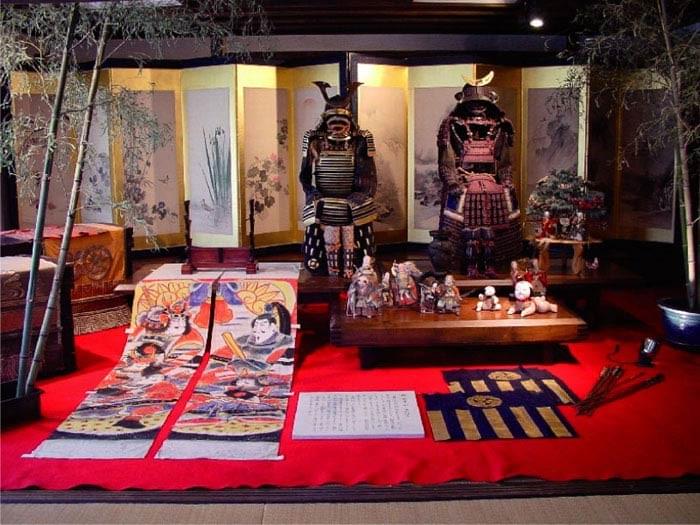
Until 1948, Children's Day was known as Boys' Day or, further back in history, Tango no Sekku. As a complement to the traditional Hinamatsuri (aka Girls' Day) display of imperial court dolls Sairi Yashiki does in March, in May they opt for a display of more masculine items, like armor and warrior dolls. In addition to the seasonal display, visitors are also invited to explore the rest of the Sairi property for a historically immersive experience.
Hours: 9:30–16:00
Admission: ¥620 adults, ¥310 children
Language: Limited English
Sairi Yashiki details (English): visitmiyagi.com
Event details: miyagi-kankou.or.jp
Location: Sairi Yashiki (齋理屋敷). Map here.
Access: 2.5 km on foot or by free rental cycle from Marumori Station
12. That Day Was Supposed to Have been Like Any Other
あの日はいつもどおりのはずだった
Through May 30
Izumi Ward, Sendai
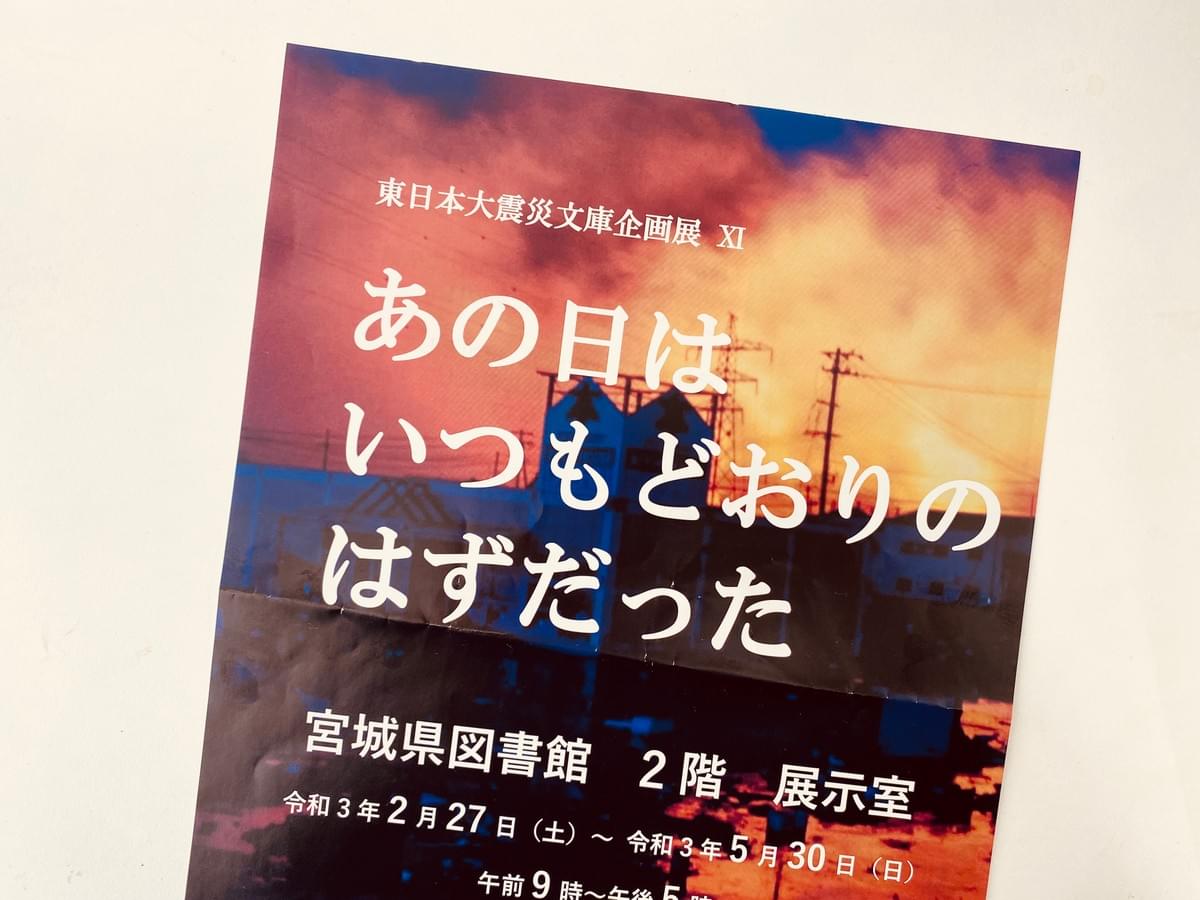
An exhibition in commemoration of ten years having passed since the Great East Japan Earthquake of March 11. Materials from the Miyagi Prefectural Library Shinsai Bunko Seibihan (宮城県図書館 震災文庫整備班) collection will be displayed, showing the scenes from the disaster and candid images of how people and organizations dealt with the tragedy.
Hours: 9:00–17:00
Closed days: Mondays
Admission: Free
Details: library.pref.miyagi.jp
Location: Miyagi Prefectural Library (宮城県図書館). Map here.
Access: 20–30 minutes by bus from Izumi-Chuo Station. At Izumi-Chuo Station Bus Pool platform #3, board bus bound for Techno Hills Higashi (テクノヒルズ東), or Miyagi Daigaku・Kogyodanchi (宮城大学・工業団地) via Izumi Park Town Shako-mae (泉パークタウン車庫前経由). Alight at Miyagi Toshokan-mae (宮城図書館前) bus stop. Timetables here.
13. Strawberry picking at Ichigo World
イチゴワールドでいちご狩り
Through late May
Yamamoto, Miyagi

Ichigo World is a strawberry farm famous for its luxury strawberries, selling for as much as ¥1,000 apiece! The farm also offers all-you-can-eat strawberry picking experiences of their less-expensive berries, complete with chocolate for dipping them in.
Hours (strawberry picking): 10:00–15:30 (last entry 15:00)
Closed days: Thursdays & Fridays
Fee: ¥2,000 per person ages 10 & older, ¥1,000 children ages 4–9, children 3 & under free.
Reservation: Highly recommended, as they often cannot accommodate visitors who come without reservations. Reservations can be booked online.
Details (English): sendaimotions.com/blog/ichigo-world
Official website: ichigo-world.jp
Location: Ichigo World (イチゴワールド). Map here.
Access: 9-minute walk from Yamashita Station
14. Ukiyoe that Challenges: Kuniyoshi, Yoshitoshi . . . and More!
国芳から芳年へ挑む浮世絵
Through June 6
Koriyama, Fukushima

An exhibition of about 150 works some of the most striking and unique ukiyo-e in existence. Kuniyoshi was an ukiyo-e artist from the late Edo–early Meiji era who earned himself a reputation for his eccentric, often violent designs. Yoshitoshi, meanwhile, is widely recognized as the last great master of ukiyo-e. He was creating at a time when Japan was rapidly adopting Western-style printmaking and other technologies; his work represents a fight against the loss of traditional Japanese culture. And yet, although his medium may have been traditional, the design and content of his prints was incredibly innovative. This innovativeness has caused some collectors of traditional ukiyo-e to dismiss his work as being too experimental, yet his work remains well appreciated by more open-minded art enthusiasts.
Hours: 9:30–17:00
Closed days: Mondays (except May 3), May 6
Admission: ¥800 adults, ¥500 seniors and students ages college to high school, children ages junior high & younger free
Details: city.koriyama.lg.jp
Location: Koriyama Art Museum (郡山市立美術館). Map here.
Access: 10 minutes by bus from Koriyama Station, followed by a 2-minute walk. From Koriyama Station Bus Stop 5 (5番乗り場), board bus bound for Bijutsukan via Tobu New Town (美術館経由東部ニュータウン). Alight at Koriyama Bijutsukan (郡山美術館) bus stop. Details and timetables here.
15. I remember: memories of the disaster and a parenting for 10 years
わたしは思い出ます:10年間の子育てからさぐる震災のかたち
Through June 13
Central Sendai

Shortly after giving birth, Sendai resident Kaori-san began keeping a diary, something she continued for ten years. The diary details her experiences raising her child, which happened to take place during the time of the Great East Japan Earthquake and its aftermath. Rereading passages from her journal, recalling those times, this exhibition recounts her daily life and experiences during those years.
Hours: 10:00–17:00
Closed days: Mondays (except public holidays) & the day after a public holiday (except Saturdays, Sundays, and other holidays).
Admission: Free
Languages: English. The Center itself has good English signage for nearly all of its permanent exhibits. Not sure about this particular exhibition since it's a temporary installation.
Exhibition details: sendai311-memorial.jp
Center details (English): visitmiyagi.com
Location: Second-floor gallery of the Sendai 3.11 Memorial Community Center (せんだい3.11メモリアル交流館 2F展示室). Map here.
Access: At Arai Station
16. Strawberry picking at Yamamoto Strawberry Farm
いちご狩り at 山元いちご農園
Through mid-June
Yamamoto, Miyagi
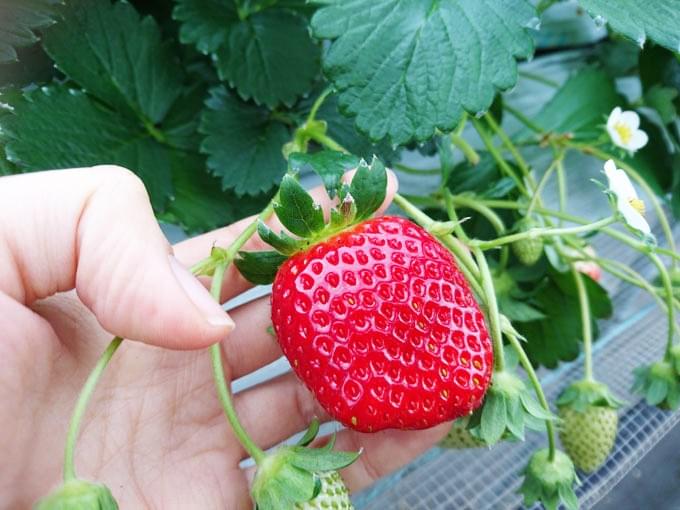
Yamamoto is Miyagi's number-one strawberry-growing area. Not only can you buy Yamamoto strawberrries, but you can also pick them yourself to gorge on right away! Yamamoto grows three varieties for picking: Nikonikoberry, Tochiotome, and Mouikko. In addition to strawberry picking, the farm also features a strawberry-centric cafe, winery, baumkuchen bakery, and omiyage shop.
Hours: 10:00–16:00
Closed days: None
Fee: Varies by date. Through May 5, it's ¥1,800 people ages 7–65, ¥1,500 seniors 65+, ¥900 children ages 3–6, children ages 2 & under free
Reservations: None needed (except for large groups)
Official website: yamamoto-ichigo.com
Location: At Yamamoto Strawberry Farm (山元いちご農園). Map here.
Access: 15-minute walk from Yamashita Station
17. Denmark Design exhibition
デンマーク・デザイン
Through June 27
Tagajo, Miyagi

Scandinavian design is one of the hottest, most longstanding trends in interior design, and Denmark is the capital of the style. This exhibition showcases designs from the mid-century onward, considered the golden age of Danish design. It attempts to grasp the essence of Danish design and the influences which have shaped its evoltution: the history, culture, and natural environment of Denmark.
Hours: 9:30–17:00 (last entry 16:30)
Admission: ¥1,200 adults, ¥1,100 seniors 65+, children ages elementary to high school ¥600
Language: The museum's permanent collection has English signage. Not sure about this exhibition, as it's a temporary installation.
Museum details (English): visitmiyagi.com
Exhibition details: thm.pref.miyagi.jp
Location: Tohoku History Museum (東北歴史博物館). Map here.
Access: At Kofuku-Tagajo Station
18. Fukko Tadami Line Shinryoku event train
風っこ只見線夏休み号
May 2–4
Aizuwakamatsu & Kaneyama, Fukushima
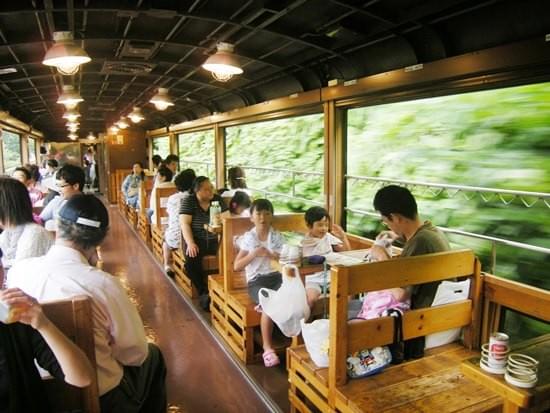
A special Golden Week–only event train along the scenic Tadami Line in Aizu! Though the Tadami Line can be ridden any time of year, the trip is especially refreshing on this event train, a rare vintage model with open-air cars. The breeze flowing through the open-air cars is not only refreshing on a sunny spring day, but also keeps the viral load in the air to a minimum, reducing the risk of coronavirus transmission.
Hours: Departs Aizuwakamatsu Station at 10:15, departs Aizu-Kawaguchi Station at 13:56
Reservations: Required. Can be booked online or in person at major JR stations
Details: jreast.co.jp
Access: At Aizuwakamatsu Station, Aizu-Kawaguchi Station, and select stations in between
19. Kanahebisui Shrine Flower Festival
金蛇水神社花まつり
May 8–21
Iwanuma, Miyagi
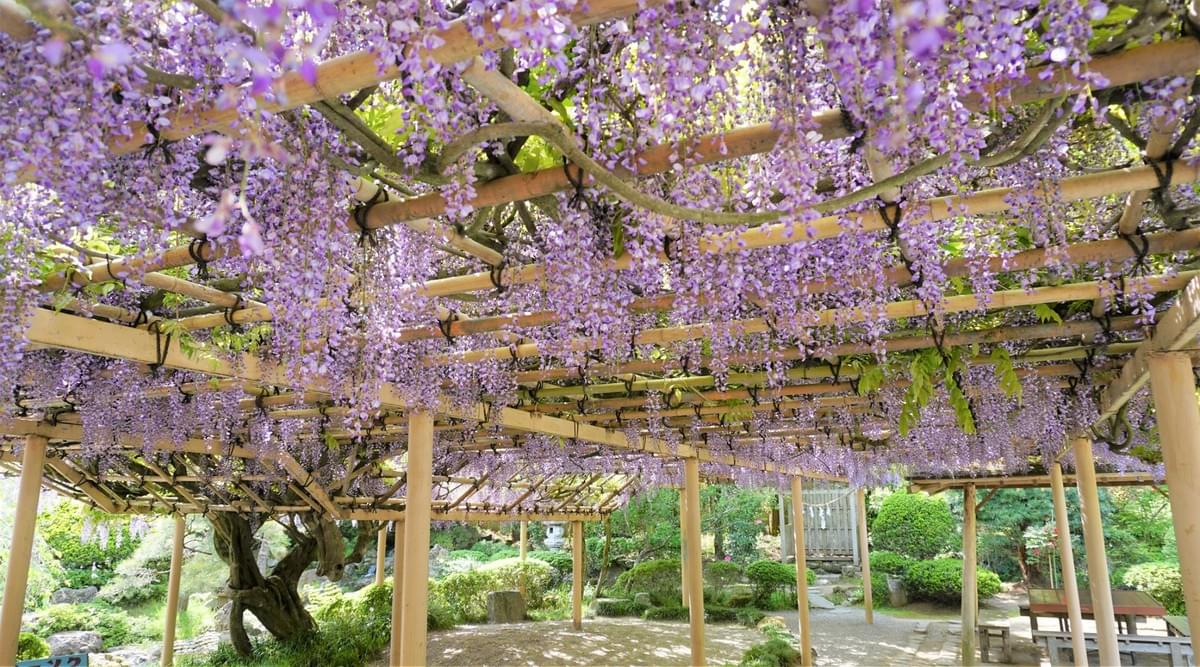
Kanahebisui Shrine is home to a number of beautiful flowering plants, which start coming into bloom around this time of year. During the flower festival period, stunning wisteria blossoms hang from a sprawling three-hundred-year-old tree, and more than 1,300 peonies in over a hundred varieties enliven the shrine grounds.
The shrine has also recently opened Omotesendo Terrace, a chic leisure complex across the street from the prayer halls. It features a gift shop selling artisanal goods and Shinto accoutrements, a café serving shrine-themed foods, and a spacious deck where guests can relax in the sunshine while gazing out at the shrine’s craggy rock garden.
Hours: 8:30–16:30 (last entry 16:00)
Admission: ¥200
Shrine details (English): visitmiyagi.com
Event details: kanahebi.cdx.jp
Access: From Iwanuma Station, it's a 40-minute walk, or a 15-minute bus ride followed by a 10-minute walk. At the Iwanuma Station West Exit bus stop (駅西口), board a Daishi Line (大師線) bound for Daishi (大師), or a Tozai Junkan Line Omawari Course (東西循環線大回コース) loop bus. Alight at Hanatopia-mae (ハナトピア前) bus stop. Bus maps and timetables here (Daishi Line) and here (Tozai Junkan Line).
20. Kesennuma Port Marché
気仙沼みなとでマルシェ。
May 9
Kesennuma, Miyagi

Kesennuma Port Marché is a bimonthly open-air event featuring food, drink, and handicraft stalls run by local producers. This month’s highlights include Taiwanese pinapple sales (part of the Aritago Taiwan! Project), authentic Thai food from Wasian Cafe Aimaki, and shark tooth accessories by Aqua Labo Kesennuma. The market stalls will be set up at Mishione Yokocho, a small "yokocho" of trailers housing restaurants and a sento bathouse, built where a factory washed away by the 2011 tsunami once stood.
Hours: 8:00–14:00
Admission: Free
Event details: facebook.com/kesennuma.marche
Mishione Yokocho details (English): visitmiyagi.com
Location: Mishione Yokocho (みしおね横丁). Map here.
Access: 10 minutes by bus from Kesennuma Station (気仙沼駅), followed by a 2-minute walk. Board clockwise city loop (市内循環) bus, alight at Umi no Ichi-mae (海の市前) bus stop. Timetable here.
21. Mt. Tatsugane azaleas
田束山のツツジ
Mid-May
Minamisanriku, Miyagi
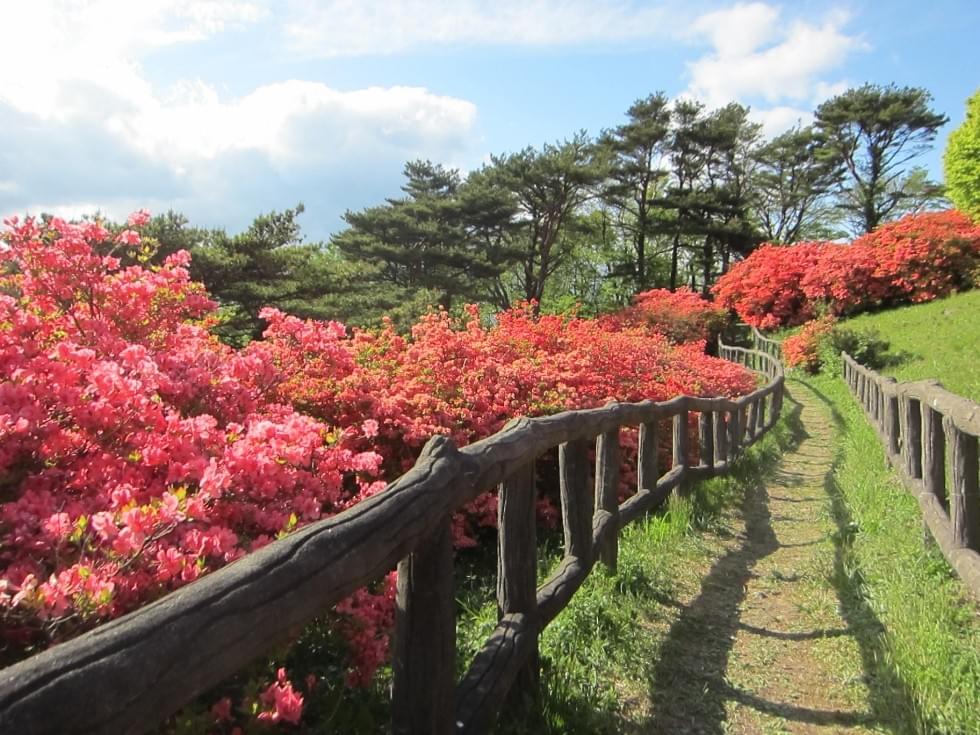
Mount Tatsugane is known for its vivid mountain azaleas and for the sutra mounds buried at its peak by the Oshu-Fujiwara clan. If you visit the mountain in May, you can see both. The view from the peak is incredible--experiencing it for yourself and you'll understand why the Oshu-Fujiwara chose this as the site for their offerings to the gods.
Hours: Always open
Admission: Free
Details (English): m-kankou.jp/english
Location: Mt. Tatsugane (田束山). Map here.
22. White azaleas at Shirotsutsuji Park
白つつじ公園の白ツツジ
Mid- to late May
Nagai, Yamagata

Shirotsutsuji Park, formerly known as Matsugaike Park, was founded in 1891. The white azaleas here have been a popular sight ever since they were first planted, with ladies in kimono posing for pictures in front of these flowers even in the early days of photography, when getting even a single photo took considerable effort and money. The 3,000 snow-white azaleas here come into bloom every May.
Hours: Always open
Admission: Free
Details: yamagatakanko.com
Location: Shirotsutsuji Koen (白つつじ公園). Map here.
Access: 15-minute walk from Nagai Station
23. Hijiori Onsen Wild Mountain Vegetable Festival
肘折温泉山菜の食まつり
May 15–June 13
Mogami, Yamagata

Sansai are flavorful and diverse wild vegetables foraged from the mountainous wilderness of Japan for a short time every spring. Savor these rare vegetables at Hijiori Onsen's Sansai no Shoku Matsuri, where you can even learn how to forage your own! In normal years, the festival is what you'd imagine—row upon row of food and market stalls, live performances, etc. Due to concern over coronavirus, this year the "festival" has been limited sansai-themed experience programs, and special cuisine being offered at area ryokan. Foraging experiences and the "Sansai School"are conducted in Japanese only. Those who don't feel that they speak Japanese well enough to get much out of those experience programs can still look forward to a stay at one of the HIjiori Onsen inns, which will be serving their best sansai dishes during the festival period.
Hours: Varies by event, typically between 9:00–15:00
Admission: Varies by event. Sansai picking experience + lunch plans start at ¥4,000.
Reservations: Required. Can book experience programs by phone, and ryokan reservations by phone or online.
Details: hijiori.jp
Location: Hijiori Onsen area (肘折温泉辺). Map here.
Access: 55 minutes by bus from Shinjo Station, followed by a 3-minute walk. At Shinjo Station (新庄駅), board bus bound for Hijiori Onsen (肘折温泉). Alight at Hijiori Onsen-Gai (肘折温泉街) bus stop. Timetable here.
24. Spring Valley Zipline-lite Tours
「ジップライン」ライトツアー
May 15–July 11
Izumi Ward, Sendai

Spring Valley, best known as a ski resort, offers thrills out in nature during green season too. One such adventure is its zipline course, which boasts seven different zipline runs. The Lite Tour covers three of the tamer runs. The Mountain Course, which opens in early summer, covers the wilder rides.
Hours: Tours start weekends & holidays at 10:00, 11:00, 13:00 14:00, & 15:00
Fee: ¥2,500
Language: English OK
Reservations: Required, can book online
Spring Valley details (English): visitmiyagi.com
Details & booking (English): sendai-experience.com
Location: Spring Valley Izumi Kogen (スプリングバレー泉高原). Map here.
Access (weekends & holidays): 50 minutes by bus from Izumi-Chuo Station (泉中央駅). Board city bus 10 bound for Izumi Kogen Spring Valley (泉高原スプリングバレー). Alight at Izumi Kogen Spring Valley, the final stop. Timetables here.
Access (weekdays): 50 minutes by bus from Izumi-Chuo Station (泉中央駅), followed by a 50-minute walk. Board city bus 10 bound for Izumidake Shizen Fureaikan (泉岳自然ふれあい館) at Izumi-Chuo Station. Alight at Izumidake Shizen Fureaikan, the final stop. Timetables here.
25. Mt. Tokusenjo azaleas
徳仙丈山のツツジ
Mid- to late May
Kesennuma, Miyagi
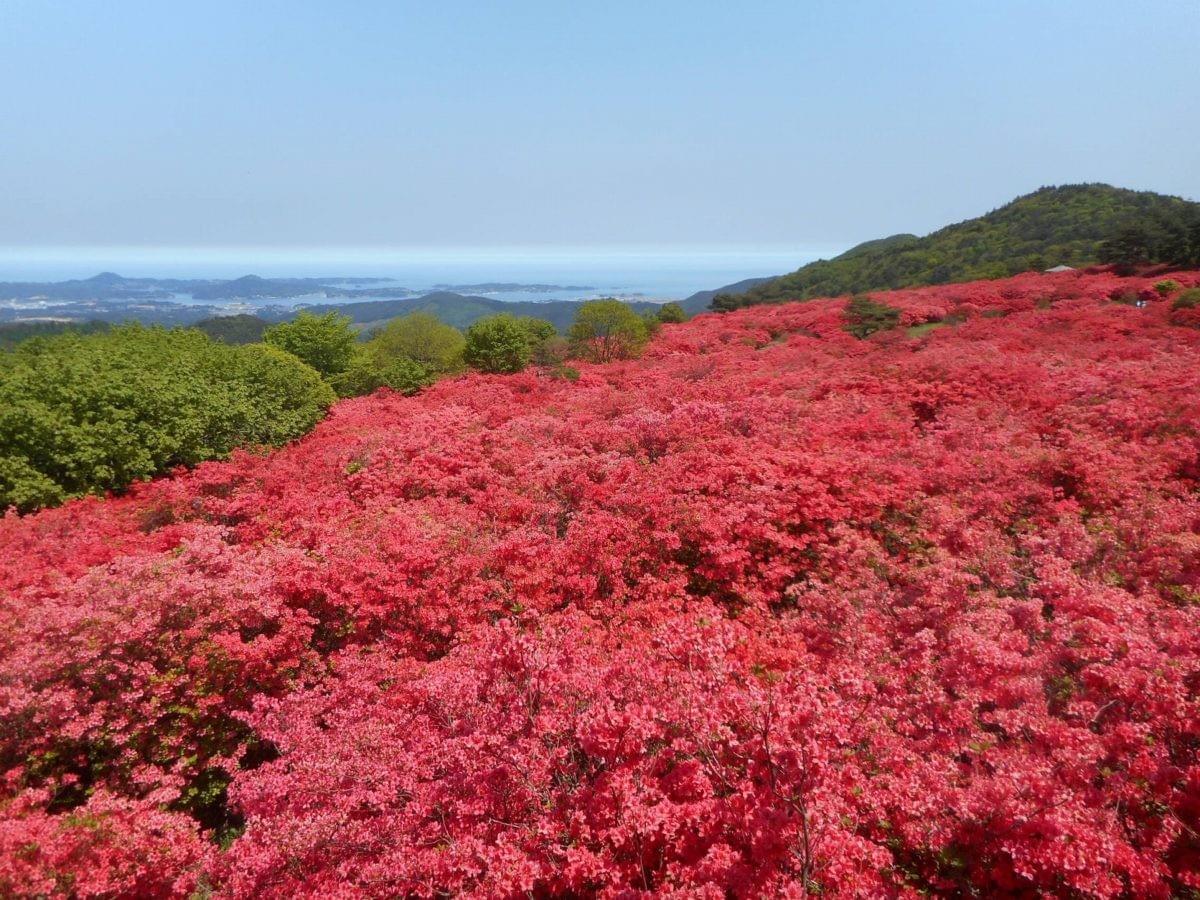
This 711-meter-tall mountain in Kesennuma is said to be Japan's number one spot for yamatsutsuji (wild mountain azaleas). An easy 2.5-hour (round-trip) hike winds through azalea bushes so tall they’re practically trees, leading to the summit, which offers views of the coast. The contrast between the blue sea and magenta yamatsutsuji is striking.
Hours: Always open
Admission: Free
Details (English): visitmiyagi.com
Access: Most years, a seasonal bus called the Tokusenjosan Tsutsuji Bus (徳仙丈山つつじバス) shuttles visitors to the mountain; however, bus will not operate this year (presumably due to concern over coronavirus). For those without a car, the trailhead is accessible by taxi from Kesennuma Station for ¥3,500–4,000 one way.
26. The Mieko Yokoi Collection: The Carvings of Fukushima Artist Gengen Sato & Fukushima Landscapes
横井美惠子コレクション─佐藤玄々の彫刻福島の作家・福島の風景
May 22–June 20
Fukushima City, Fukushima
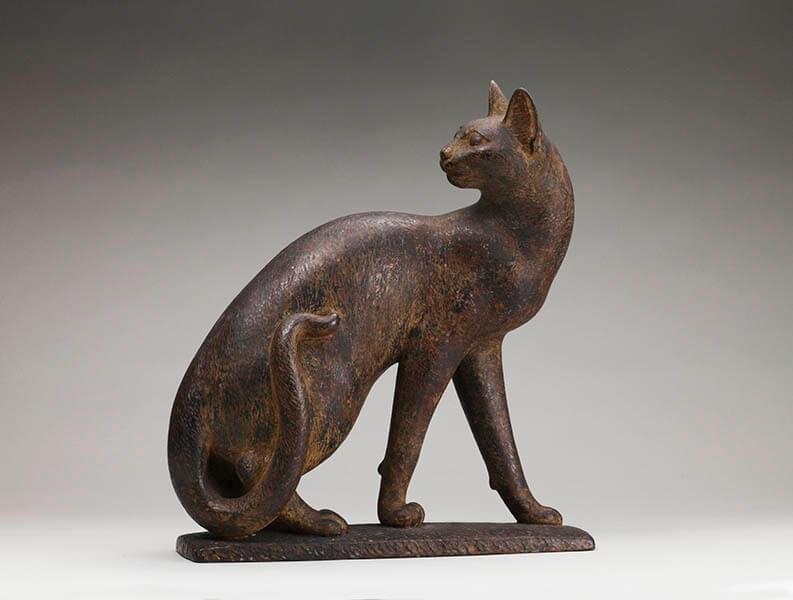
Gengen Sato (1888–1963) was a sculptor born in Soma, Fukushima. He studied under French sculptor Antoine Bourdelle, inspiriring him to incorprate a modern perspective into his carvings, which were otherwise based in traditional Japanese woodcarving techniques. Though little known overseas, his work is considered representative of Japanese early modern sculpture.
Hours: 9:30–17:00 (last entry 16:30)
Closed days: Mondays and the day following a public holiday (Saturdays & Sundays excepted). If Monday is a public holiday, then the museum will be open Monday.
Admission: Adults ¥280, children ages high school & younger free
Details: art-museum.fcs.ed.jp
27. Kesennuma Kite Festival
気仙沼天旗まつり
May 23
Kesennuma, Miyagi
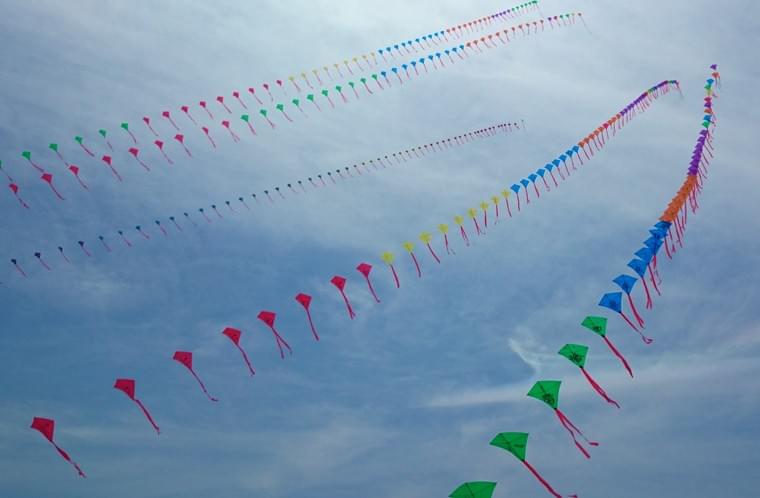
A fun and photogenic spring festival where colorful kites are flown at the breezy Cape Iwaisaki. Colorful kites take to the skies, creating a cheerful spectacle. Those interested in kite flying will want to watch demonstrations and learn techniques the famous Japanese kitefliers who will be in attendance. In addition to the kites, the scenery everyday attractions of the cape itself is also destination worthy, from the geyser-like shiofuki to salt-making experiences at the cape’s workshop facility.
Hours: 10:00–13:00
Admission: Free
Cape Iwaisaki details (English): visitmiyagi.com
Event details: miyagi-kankou.or.jp
Access: 30-minute walk from Rikuzen-Hashikami Station
28. Zao Pension Village Open Gardens
蔵王ペンション村オープンガーデン
May 24–July 5
Kaminoyama, Yamagata

"Pensions" are small, homey inns, similar to Western bed-and-breakfast inns. The Zao Pension Village is a cluster of these inns located on the outskirts of Zao Onsen. Many of the pension owners are proud of the fine gardens they've cultivated. Though visitors are invited to explore the gardens anytime of year, late spring through early summer is especially recommended, many flowers are in bloom at that time.
Hours: 10:00–15:00
Admission: Free
Details (English): opengardenzao.com
Location: Zao Pension Village (蔵王ペンション村). Map here.
Access: 5 minutes by taxi from the Zao Onsen Bus Terminal (蔵王温泉バスターミナル). The bus terminal is about 40 minutes by bus from Yamagata Station. At Yamagata Ekimae Bus Stop 1 (山形駅前1番), board bus bound forZao Onsen (蔵王温泉). Alight at Zao Onsen Bus Terminal (蔵王温泉バスターミナル), the final stop. Timetables here.
29. Nanyo Suwa Shrine Peony Festival Grand Finale
しゃくしゃく祭りグランドフィナーレ
May 26–June 11
Nanyo, Yamagata

Nanyo Suwa Shrine is atmospheric countryside shrine boasting the largest peony cultivation area in Japan. The peony cultivation area occupies over half of the shrine’s 16,400 m2 grounds, and is home to over 100,000 peonies in 108 varieties. If you're interested in spotting all the different varieties, the shrine's website offers a free, easy-to-use pictoral guide.
Sadly, 2021 will be the final year for the Nanyo Suwa Shrine Peony Garden. So if it’s something you’ve been meaning to see but just haven’t gotten around to it, or something you’re hearing of for the first time just now and think it sounds wonderful, make this the year you go (because it’s the last chance you’ll have)!
Hours: 8:30–17:00
Closed days: None
Admission: ¥500 adults, children 18 & under free
Details & flower status: nanyo-syakuyaku.com
Location: Nanyo Suwa Shrine (南陽諏訪神社). Map here.
Access: 32-minute walk from Nakagawa Station
30. Mt. Takashiba azaleas
高柴山のヤマツツジ
Late May
Tamura, Fukushima

Late spring is yamatsutsuji (wild mountain azalea) season, and Mount Takeshiba is one of the best places to see them. The hike itself here is quite gentle (it takes only about 30 minutes from trailhead to mountain peak), so for confident hikers a visit here is mostly about the flowers. There's also an observation deck at the top of the mountain, so you can peek over the tall azalea bushes for a view of the countryside below.
Hours: Always open
Admission: Free
Flower status & hike details: city.tamura.lg.jp
Location: Mt. Takashiba (高柴山). Map here.
Access from Koriyama Station (郡山駅): About 45 minutes by bus from Koriyama Station (郡山駅).From Koriyama Station, board bus bound for (Akanuma) Yanagibashi・Ono ((赤沼)柳橋・小野), alight at Takashibayama Iriguchi (高柴山バス停) bus stop. Map here.
Access from Ononiimachi Station (小野新町駅): About 25 minutes by bus from Ononimachi Station (小野新町駅). From Ononiimachi Station, board bus bound for Koriyama (郡山). Alight at Takashibayama Iriguchi (高柴山入口). Map here.
31. Sanno Historical Park Iris Garden
山王史跡公園あやめ園
Late May–early July
Kurihara, Miyagi

The Sanno Historical Park Iris Garden was established as a specimen garden, home to historical and modern varieties. Observe how the process of selective breeding over the ages has altered the look of these ornamental flowers. Though the Iris Festival stage performances/food stalls/etc. have been suspended this year, the public is still invited to come enjoy the flowers.
Hours: 8:30–17:00
Closed days: None during iris season
Admission: ¥520 adults, ¥260 children ages high school & younger
Details: kurihara-kb.net
Location: Sanno HIstorical Park Iris Garden (山王史跡公園あやめ園). Map here.
Access: 70 minutes by bus from Sendai Station, followed by a 5-minute walk. Board bus Ichihasama Line (一迫線) bus bound for Ichihasama Sogo Shisho-mae (一迫総合支所前), alight at Ichihasama Sogo Shisho-mae. Bus info here.

